#from a letter to sing out! magazine in 1962
Explore tagged Tumblr posts
Text
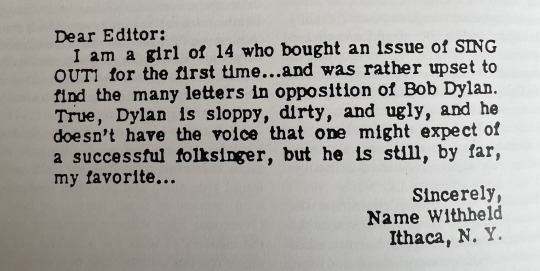
she gets it
#😭😭😭😭#the most relatable thing ever written#early bob dylan girlie#from a letter to sing out! magazine in 1962#found in one of my dad's many many dylan biogs#bob dylan
7K notes
·
View notes
Text
MOTHER-IN-LAW
November 4, 1949
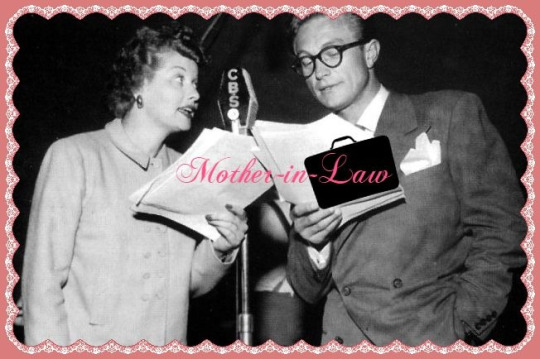
“Mother-In-Law” (aka “George’s Mother Visits”) is episode #60 of the radio series MY FAVORITE HUSBAND broadcast on November 4, 1949.
Synopsis ~ George gets a letter from his mother that she’s moving to Sheridan Falls. Liz has no doubt that means staying with them! But when will she ever leave?
This was the tenth episode of the second season of MY FAVORITE HUSBAND. There were 43 new episodes, with the season ending on June 25, 1950.
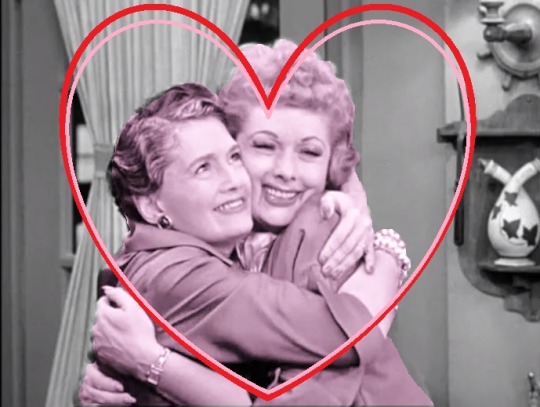
Although similarly titled, this radio episode is not the basis for the “I Love Lucy” episode “Lucy’s Mother-in-Law” (ILL S4;E8) in 1954.

“My Favorite Husband” was based on the novels Mr. and Mrs. Cugat, the Record of a Happy Marriage (1940) and Outside Eden (1945) by Isabel Scott Rorick, which had previously been adapted into the film Are Husbands Necessary? (1942). “My Favorite Husband” was first broadcast as a one-time special on July 5, 1948. Lucille Ball and Lee Bowman played the characters of Liz and George Cugat, and a positive response to this broadcast convinced CBS to launch “My Favorite Husband” as a series. Bowman was not available Richard Denning was cast as George. On January 7, 1949, confusion with bandleader Xavier Cugat prompted a name change to Cooper. On this same episode Jell-O became its sponsor. A total of 124 episodes of the program aired from July 23, 1948 through March 31, 1951. After about ten episodes had been written, writers Fox and Davenport departed and three new writers took over – Bob Carroll, Jr., Madelyn Pugh, and head writer/producer Jess Oppenheimer. In March 1949 Gale Gordon took over the existing role of George’s boss, Rudolph Atterbury, and Bea Benaderet was added as his wife, Iris. CBS brought “My Favorite Husband” to television in 1953, starring Joan Caulfield and Barry Nelson as Liz and George Cooper. The television version ran two-and-a-half seasons, from September 1953 through December 1955, running concurrently with “I Love Lucy.” It was produced live at CBS Television City for most of its run, until switching to film for a truncated third season filmed (ironically) at Desilu and recasting Liz Cooper with Vanessa Brown.
MAIN CAST
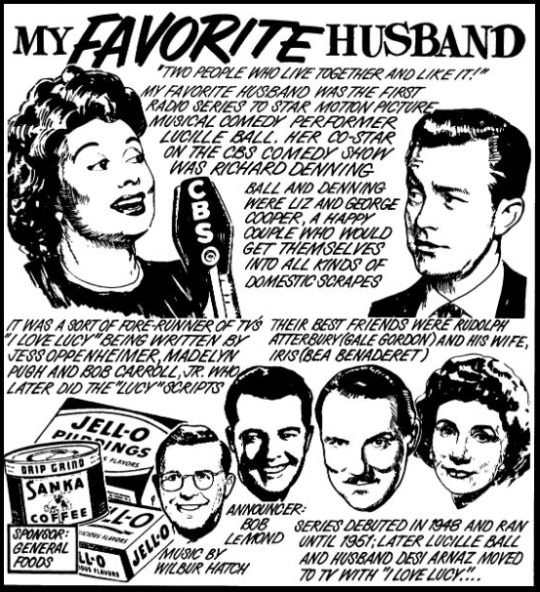
Lucille Ball (Liz Cooper) was born on August 6, 1911 in Jamestown, New York. She began her screen career in 1933 and was known in Hollywood as ‘Queen of the B’s’ due to her many appearances in ‘B’ movies. With Richard Denning, she starred in a radio program titled “My Favorite Husband” which eventually led to the creation of “I Love Lucy,” a television situation comedy in which she co-starred with her real-life husband, Latin bandleader Desi Arnaz. The program was phenomenally successful, allowing the couple to purchase what was once RKO Studios, re-naming it Desilu. When the show ended in 1960 (in an hour-long format known as “The Lucy-Desi Comedy Hour”) so did Lucy and Desi’s marriage. In 1962, hoping to keep Desilu financially solvent, Lucy returned to the sitcom format with “The Lucy Show,” which lasted six seasons. She followed that with a similar sitcom “Here’s Lucy” co-starring with her real-life children, Lucie and Desi Jr., as well as Gale Gordon, who had joined the cast of “The Lucy Show” during season two. Before her death in 1989, Lucy made one more attempt at a sitcom with “Life With Lucy,” also with Gordon.
Richard Denning (George Cooper) was born Louis Albert Heindrich Denninger Jr., in Poughkeepsie, New York. When he was 18 months old, his family moved to Los Angeles. Plans called for him to take over his father’s garment manufacturing business, but he developed an interest in acting. Denning enlisted in the US Navy during World War II. He is best known for his roles in various science fiction and horror films of the 1950s. Although he teamed with Lucille Ball on radio in “My Favorite Husband,” the two never acted together on screen. While “I Love Lucy” was on the air, he was seen on another CBS TV series, “Mr. & Mrs. North.” From 1968 to 1980 he played the Governor on “Hawaii 5-0″, his final role. He died in 1998 at age 84.
Ruth Perrott (Katie, the Maid) was also later seen on “I Love Lucy.” She first played Mrs. Pomerantz, a member of the surprise investigating committee for the Society Matrons League in “Pioneer Women” (ILL S1;E25), as one of the member of the Wednesday Afternoon Fine Arts League in “Lucy and Ethel Buy the Same Dress” (ILL S3;E3), and also played a nurse when “Lucy Goes to the Hospital” (ILL S2;E16). She died in 1996 at the age of 96.
Bob LeMond (Announcer) also served as the announcer for the pilot episode of “I Love Lucy”. When the long-lost pilot was finally discovered in 1990, a few moments of the opening narration were damaged and lost, so LeMond – fifty years later – recreated the narration for the CBS special and subsequent DVD release.
Bea Benadaret (Iris) and Gale Gordon (Rudolph) do not appear in this episode.
GUEST CAST

Hans Conried (Mr. Benjamin Wood) first co-starred with Lucille Ball in The Big Street (1942). He then appeared on “I Love Lucy” as used furniture man Dan Jenkins in “Redecorating” (ILL S2;E8) and later that same season as Percy Livermore in “Lucy Hires an English Tutor” (ILL S2;E13) – both in 1952. The following year he began an association with Disney by voicing Captain Hook in Peter Pan. On “The Lucy Show” he played Professor Gitterman in “Lucy’s Barbershop Quartet” (TLS S1;E19) and in “Lucy Plays Cleopatra” (TLS S2;E1). He was probably best known as Uncle Tonoose on “Make Room for Daddy” starring Danny Thomas, which was filmed on the Desilu lot. He joined Thomas on a season 6 episode of “Here’s Lucy” in 1973. He died in 1982 at age 64.
Mr. Wood is the Cooper’s next door neighbor. He has eleven children.
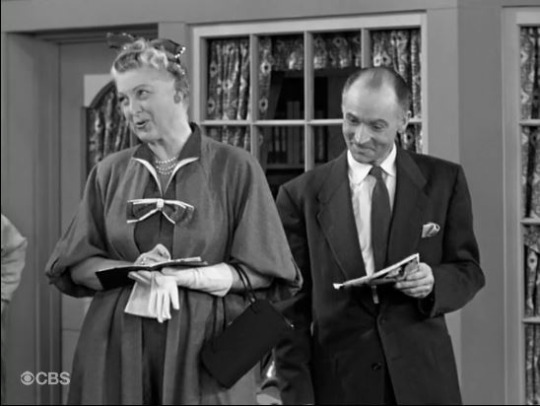
Eleanor Audley (Leaticia Cooper, George’s Mother) previously played this character in “George is Messy” on June 14, 1950. She would later play Eleanor Spalding, owner of the Westport home the Ricardos buy in “Lucy Wants To Move to the Country” (ILL S6;E15) in 1957, as well as one of the Garden Club judges in “Lucy Raises Tulips” (ILL S6;E26).
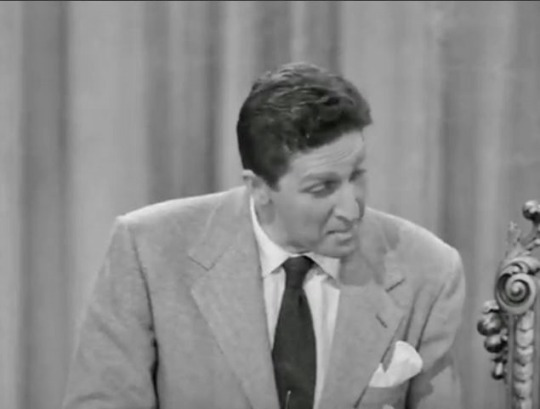
Peter Leeds (Deliveryman) was born in Bayonne, NJ, was also heard on “My Favorite Husband in “Too Many Television Sets” in October 1949 and “Dance Lessons” in June 1950. He will be seen as the Reporter questioning the Maharincess of Franistan in “The Publicity Agent” (ILL S1;E31). He starred with Lucy in the films The Long, Long Trailer (1953) and The Facts of Life (1960) with Bob Hope. Coincidentally, he also appeared in “Lucy and Bob Hope” (ILL S6;E1) as well as an episode of “Here’s Lucy” in 1971.
EPISODE
ANNOUNCER: “As we look in on Sheridan Falls and the Coopers, Liz is in the living room reading a magazine as Katie the maid dusts around the room.”
Liz asks about the mail, but Katie is light-heartedly singing “April Showers.”
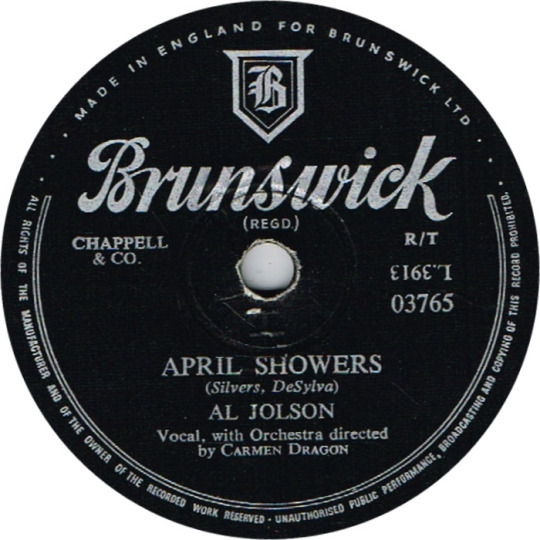
"April Showers" is a popular song written by Louis Silvers and B. G. De Sylva in 1921. It it is one of many popular songs whose lyrics use a "Bluebird of happiness" as a symbol of cheer. The song was introduced in the 1921 Broadway musical Bombo, where it was performed by Al Jolson. That same musical introduced the song “California, Here I Come!” which was famously sung by the cast of “I Love Lucy” in January 1955.
Liz correctly assumes that Katie is so happy because Mr. Negley, the mailman, has flirted with her. Katie says they were “playing post office.”
KATIE: “He’s so creative. He said my mouth was like a postage stamp. Then he canceled me!”
Katie hands her the mail and Liz finds a letter from her mother-in-law.
LIZ: “No one else addresses a letter ‘To George Cooper Only’ marked personal all over and then seals it with Scotch tape!”
Liz says that George’s mother does not acknowledge their marriage, let alone address her as Mrs. George Cooper. Liz decides to sneak a peak at what’s inside the envelope.
LIZ: “I can just see some of the writing. It says ‘Keep Out Nosy’!”
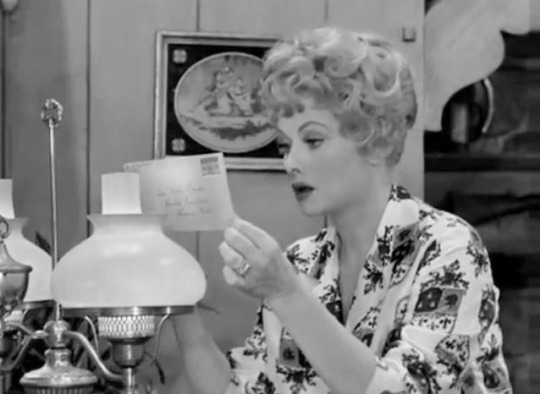
Lucy Ricardo was adept at secretly opening and reading sealed envelopes. In 1951′s “Drafted” (ILL S1;11) she uses the old fashioned steam method, but by 1960′s “Lucy and the Mustache” (LDCH S3;E3) she’s using knitting needles and holding the envelope up to a lamp.
When George comes home from work, Liz doesn’t even bother with a kiss before giving George the mail. George opens the letter from his mother, which reads “say hello to what’s-her-name.” George’s mother is moving to Sheridan Falls and Liz wants to put her up at the Sheridan Arms (far away) but George proposes the Garden Court (two blocks away).
That night, Liz wants to smooch in case they have to ‘ration their passion’. Liz is sure Mother will want to move in with them. Mother (Eleanor Audley) enters mid-smooch. Despite the clinch, Mother pretends she doesn’t recognize Liz as Mrs. Cooper!
Mother ‘mother smothers’ George, much to Liz’s chagrin. George admits that they haven’t found her an apartment yet. Mother quickly agrees to stay with them - only for a few days.
LIZ: “It sounds longer when she says it.”
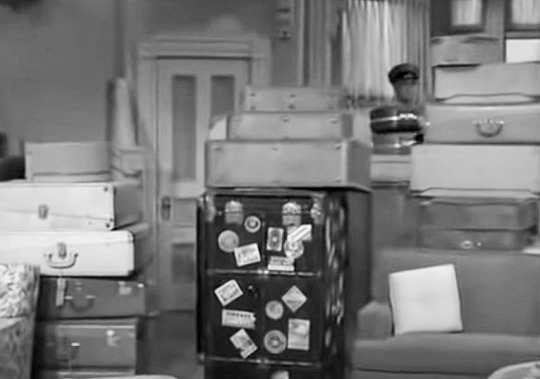
A Deliveryman (Peter Leeds) rings the bell to announce that they’ve finished unloading Mother’s things:
LIZ: “Six suitcases, a trunk, an easy chair, a potted plant, a barrel of dishes, two crates of books - just enough for a few days. She’s landed! She’s moved her supplies up and she’s dug in for the winter. You can throw away your calendar, George. From now on, every day is mother’s day with us!”
Two weeks later, Mother is still there and Katie is ready to quit. George’s mother has changed everything in the kitchen around. Liz confides that she’s had no privacy with George.
LIZ: “The three of us have been inseparable ever since she’s been here. I’m beginning to feel like one of the Andrews Sisters. I’d better go in and see how Patty and LaVerne are getting along.”
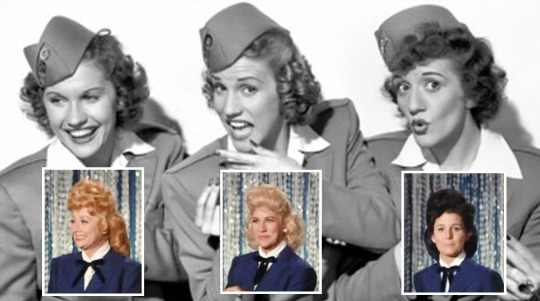
The Andrews Sisters were a very successful trio of singing sisters during World War II with 19 gold records and sales of nearly 100 million copies. In 1937, the sisters scored their first big hit with “Bei Mir Bist Du Schoen.” In addition to “Boogie Woogie Bugle Boy,” their best-known songs included “Don’t Sit Under the Apple Tree” and “Rum and Coca Cola.” The trio officially broke up after the death of LaVerne in 1967, when a suitable replacement could not be found. Patty Andrews guest starred on “Here’s Lucy” as herself in 1969. The plot had Lucy Carter and her daughter Kim (Lucie Arnaz) stepping in for the other two singers for a charity show. During a poker game in “Be a Pal” (ILL S1;E2), Lucy calls her two queens ‘sisters.’ When Fred looks at his newly-dealt hand he quips “You can tell your two Andrews Sisters not to wait up for LaVerne.”
In the living room, Liz finds Mother and George laughing about old times back home. Mother mentions Betty Johanson, a girl George ‘knew slightly’ a dozen years ago. Mother adds that she ‘hasn’t changed a bit.’
Later, Liz tells George that Katie has quit due to his mother’s meddling. George thinks Liz is out looking for an apartment, when Liz saw going to the movies at the Strand Theatre. At first Mother denies going to a movie, but Liz tricks her.
LIZ: “Well, if you were tired, you should have gone to a show. There’s a good one at the Strand: ‘Tokyo Joe’ with Clark Gable.” MOTHER: “Gable? No, it was Humphrey Bogart, I....”
Mother has been caught in her lie, so she fakes illness and goes to her room.
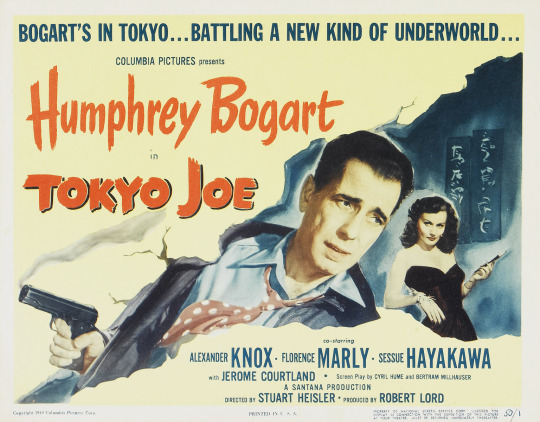
Tokyo Joe is a crime film directed by Stuart Heisler and starring Humphrey Bogart. It premiered October 26, 1949, a week before this broadcast. At the time, Clark Gable’s film Any Number Can Play was still in theatres.
Liz dissolves into tears at the prospect of her mother-in-law staying forever and runs next door to talk to Mr. Woods (Hans Conried) about it over a cup of tea. Mr. Woods says the same thing happened to him with his mother-in-law.
MR. WOODS: “She moved out after the birth of our eleventh child!” LIZ: “Is that the only cure?”
George comes over to find his wife and Mr. Wood acts as intermediary, shouting at George through the window. They are successful at patching things up. George has told his mother to leave and (unbelievably) she’s graciously agreed to go. Just as she’s about to leave, she gets a spell and faints.
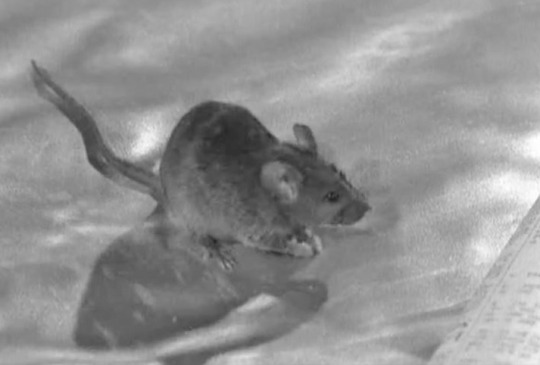
LIZ: “George! Look out! A mouse! Running across the floor right near your mother’s hand!”
Mother jumps up and runs away from the invisible rodent. Liz tricks has tricked her again! But when Mother sprints across the room, she trips and sprains her ankle! Six weeks of recuperation ahead!
GEORGE: “How did this happen?” MOTHER: “I tripped and fell over my suitcase! Someone put it by the front door!” LIZ: “Oh, no!”
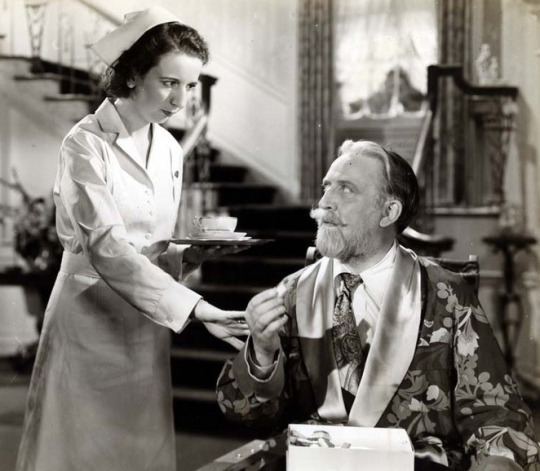
his ending is identical to the play and film The Man Who Came To Dinner by Kaufman and Hart. In it, Sheridan Whiteside is a bombastic houseguest is finally convinced to leave when he slips on the ice and must stay on to recuperate, much to the frustration of his hosts. The 1939 stage play and 1942 film featured Lucille Ball’s friend Mary Wickes as Whiteside’s nurse.
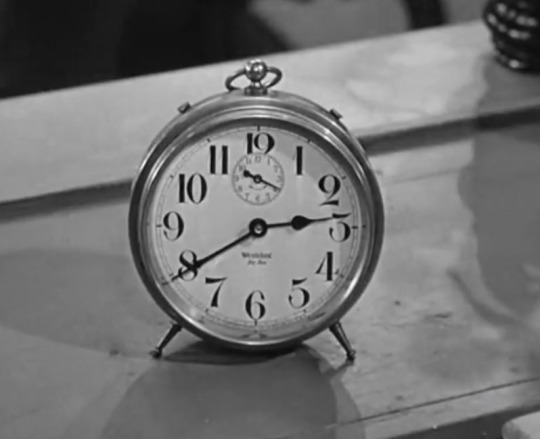
In the bedtime tag, Liz and George are asleep in bed. Liz wakes George to wonder why he’s smiling. He’s dreaming about the most beautiful creature in the world: a rainbow trout!
LIZ: “If I ever find one scale on your lapel I’ll swim upstream to mother. Goodnight, George!”
End of Episode
#My Favorite Husband#Lucille Ball#Richard Denning#Eleanor Audley#Hans Conried#Peter Leeds#Mother-in-Law#The Man Who Came To Dinner#Tokyo Joe#Clark Gable#Humphry Bogart#The Andrews Sisters#April Showers
3 notes
·
View notes
Text
notes on love in hate nation’s timeline:
susannah’s first day at nation is seventeen days before Life magazine is scheduled to visit.
in miss asp’s song, she tells mr. rusk that “we’ll see you next sunday at three.”
at lunch, sheila tells susannah that “it’s been five days” and she needs to prove herself to the other girls.
in francis’s letter, he claims that by the time susannah reads it, they will have been apart for a week.
the day that the letter is received is the same day that miss asp attends the women against change conference and the party is planned and thrown.
at the start of act two, it’s been four days since the party, during which sheila has been in solitary and the girls have been kept in their room.
in miss asp’s song ii, just before judith enters, miss asp tells mr. rusk that she’ll see him in four days.
susannah makes contact with sheila via the pipes eight days after the party.
when susannah arrives to tell sheila about the escape plan, she tells sheila she’s been in solitary for eight days.
the Life visit is canceled due to a riot at ole miss over the admission of james meredith, and miss asp is informed of this by telegram the day that Life is supposed to visit.
the ole miss riot occurred on the evening of september 30, 1962, which was a sunday. assuming that the Life visit was never rescheduled (i.e. it was always supposed to happen on that same sunday), most of the events of the show can be tied to specific dates in 1962, as follows:
september 13 (thursday):
susannah is taken to nation by her father, after a visit from francis in which he promises to help break her out.
susannah is introduced to the other girls at nation.
miss asp tells susannah the history of nation, tells all the girls about the upcoming visit from Life, and cuts the strings on susannah’s ukulele.
sheila enters and susannah learns about her three escape attempts.
the girls interrogate susannah about what she’s hiding and tell her about doc shock.
buzz takes the other girls to lunch and leaves sheila to wait while susannah puts on her skirt.
susannah and sheila talk about susannah’s life and francis, and susannah prepares herself for life at nation.
between september 13 and 18 (thursday-tuesday):
miss asp learns from mr. rusk that the focus of Life’s profile is integration in the juvie hall system and agrees to let him interview susannah. (most likely this happened on monday or tuesday, so that “next sunday” could be reasonably interpreted to mean “the sunday more than one week away but less than two weeks away” and could correspond to september 30.)
september 18 (tuesday):
susannah is mocked at lunch for asking for brussels sprouts, and sheila tells her to offer a cigarette to judith.
susannah is taught to smoke by kitty.
september 22 (saturday):
susannah is told that she’s been chosen for an interview by Life and receives the letter from francis. (this assumes that he was incorrect about them having been apart for a week by the time she read the letter, possibly due to miss asp interfering with the mail.)
sheila meets susannah in the bathroom and they talk about music, francis, and their lives.
the other girls come to the bathroom to plan the party that evening.
francis comes to nation, claiming to be susannah’s brother, and shares his “plan” for breaking her out and asks to marry her.
miss asp leaves for long island to attend the women against change conference.
the party is thrown, and susannah runs out when the girls try to get her to sing.
sheila follows susannah out, susannah tells her that francis is coming that night but she won’t go with him, and they plan to break into miss asp’s office to get susannah’s ukulele strings.
sheila and susannah are caught almost kissing in miss asp’s office, and miss asp destroys harriet ii and takes sheila to solitary.
september 26 (wednesday):
buzz brings sheila’s things back and tells the girls he’s been told not to speak to them anymore.
judith tells susannah what happened to harriet.
kitty and judith fight, and kitty shows susannah the page from the pamphlet in miss asp’s office.
francis offers an endowment for nation to miss asp.
susannah gets her ukulele strings back.
francis tells susannah about his plan to escape to mexico.
susannah starts knocking on the pipes to try to communicate with sheila.
judith is taken to miss asp’s office.
miss asp tells judith she’s stopped her transfer and rescinds her protection of judith.
september 30 (sunday):
after days of susannah knocking on the pipes, sheila knocks back.
susannah and the girls make a plan to break sheila out of solitary.
susannah tells sheila about the plan and confesses her feelings.
the girls prepare nation for Life’s arrival.
the plan is executed and then goes wrong when sheila is caught.
miss asp learns that Life magazine won’t be coming.
the girls fight back against miss asp and buzz, and end up burning down nation.
sheila confesses her feelings to susannah and escapes to mexico with francis.
#love in hate nation#i have some issues with the chronology in this show but it's far better than most things i care about at having a consistent timeline#chronology posting
21 notes
·
View notes
Text
Helen Humes






Helen Humes (June 23, 1913 – September 9, 1981) was an American jazz and blues singer.
Humes was a teenage blues singer, a vocalist with Count Basie's band, a saucy R&B diva, and a mature interpreter of the classy popular song. Along with other well-known jazz singers of the swing era, Humes helped to shape and define the sound of vocal swing music.
Early life
She was born on June 23, 1913, in Louisville, Kentucky, to Emma Johnson and John Henry Humes. She grew up as an only child. Her mother was a schoolteacher, and her father was the first black attorney in town. In an interview, Humes recalled her parents singing to each other around the house and in a church choir.
Humes was introduced to music in the church, singing in the choir and getting piano and organ lessons given at Sunday school by Bessie Allen, who taught music to any child who wanted to learn. Humes began occasionally playing the piano in a small and locally traveling dance band, the Dandies. This constant involvement in music would lead to her singing career in the mid-1920s.
Career
Early career
Her career began with her first vocal performance, at an amateur contest in 1926, singing "When You're a Long, Long Way from Home" and "I'm in Love with You, That's Why". Her talents were noticed by a guitarist in the band, Sylvester Weaver, who recorded for Okeh Records and recommended her to the talent scout and producer Tommy Rockwell. At the age of 14 Humes recorded an album in St. Louis, singing several blues songs. Two years later, a second recording session was held in New York, and this time she was accompanied by pianist J. C. Johnson. Despite this introduction to the music world, Humes did not make another record for another ten years, during which she completed her high school degree, took finance courses, and worked at a bank, as a waitress, and as a secretary for her father. She stayed home for a while, eventually leaving to visit friends in Buffalo, New York. While there, she was invited to sing a few songs at the Spider Web, a cabaret in town. This brief performance turned into an audition, which turned into a $35-a-week job. She stayed in Buffalo, singing with a small group led by Al Sears.
Cincinnati Cotton Club
While Humes was home in Louisville (she said she always returned home at least twice a year) she got a call from Sears, who was in Cincinnati. He wanted her to sing at Cincinnati's Cotton Club. The Cotton Club was an important venue in the Cincinnati music scene. It was an integrated club that booked and promoted a lot of black entertainers. Humes moved to Cincinnati in 1936 and sang with Sears's band again at the Cotton Club.
Count Basie first heard and approached Humes while she was performing at the Cotton Club in 1937. He asked her to join his touring band to replace Billie Holiday. He told her that she would be paid $35 a week, and she responded, "Oh shucks, I make that here and don't have to go no place!" Not long after this encounter, Humes moved in 1937 to New York City, where John Hammond, an influential talent scout and producer, heard her singing with Sears's band at the Renaissance Club. Through Hammond, she became a recording vocalist with Harry James's big band. Her swing recordings with James included "Jubilee", "I Can Dream, Can't I?", Jimmy Dorsey's composition "It's the Dreamer In Me", and "Song of the Wanderer". In March 1938 Hammond persuaded Humes to join Count Basie's Orchestra, where she would stay for four years.
The Count Basie Orchestra
In the Count Basie Orchestra, Humes gained acclaim as a singer of ballads and popular songs. While she was also a talented blues singer, Jimmy Rushing, another member of the orchestra at the time, held domain over the blues vocals. Her vocals with Basie's band included "Between the Devil and the Deep Blue Sea" and "Moonlight Serenade".
On December 24, 1939, Humes performed with the Count Basie Orchestra and James P. Johnson at the second From Spirituals to Swing concert at Carnegie Hall, produced by John Hammond. After this concert, most of her time with the Basie Orchestra was spent touring. In a 1973 oral history she described life on tour:
I used to pretend I was asleep on the Basie bus, so the boys wouldn't think I was hearing their rough talk. I'd sew buttons on and cook for them, too…in places where it was difficult to get anything to eat…down south. I wasn't interested in drinking and keeping late hours…but my kidneys couldn't stand the punishment of those long rides… then too I got tired of singing the same songs.
For these reasons, Humes left the group in 1942, as her health was not good and the stress of being on tour was too taxing.
Café Society and solo career
While home again in Louisville in 1942, Humes was called by John Hammond and invited to sing at Café Society in New York. She performed frequently there, accompanied by the pianists Teddy Wilson and Art Tatum. During that year, she also performed at the Three Deuces, at the Famous Door with Benny Carter (February), at the Village Vanguard with Eddie Heywood, and on tour with a big band led by the trombonist Ernie Fields.
In 1944, Humes moved to Los Angeles, California, where she spent a lot of time in the studio, recording solo work and movie soundtracks. Some of the soundtracks she recorded were Panic in the Streets and My Blue Heaven. She appeared in the musical film Jivin' in Be-Bop, by Dizzy Gillespie. She also performed and toured with Jazz at the Philharmonic for five seasons. In 1945, she recorded her most popular songs, two jump blues tunes, "Be-Baba-Leba" (Philo, 1945) and "Million Dollar Secret" (Modern, 1950). Despite this, her career stagnated. From the late 1940s to the mid-1950s she made a few recordings, working with different bands and vocalists, including Nat King Cole, but was not nearly as active as she had been. In 1950 she recorded Benny Carter's "Rock Me to Sleep". She bridged the gap between big-band swing jazz and rhythm and blues.
In 1956, Humes toured Australia with the vibraphonist Red Norvo. Their tour was well received, and she returned again in 1962 and 1964. She performed at the Newport Jazz Festival in 1959 and the Monterey Jazz Festival in 1960 and 1962. She toured Europe with the first American Folk Blues Festival in 1962.
She returned to the United States in 1967 to take care of her ailing mother. At this point Humes viewed her singing career as a part of her past. She took a job at a local ammunition plant, sold her record player and her records and stopped singing. From 1967 to 1973, she did not work as a singer, until Stanley Dance persuaded her to perform at the Newport Jazz Festival in 1973. This performance led to a revival of her career in music. The festival was followed with multiple European engagements and some albums made in France for Black and Blue. She sang regularly at the Cookery in New York City from 1974 to 1977.
Humes subsequently performed occasionally in America and at European venues and festivals, including the prestigious Nice Jazz Festival in the mid-1970s. She recorded her final album, Helen, for Muse Records in 1980. She received the Music Industry of France Award in 1973 and the key to the city of Louisville in 1975.
Humes said of her career, "I'm not trying to be a star! I want to work and be happy and just go along and have my friends – and that's my career."
Death
Humes died of cancer in Santa Monica, California, in 1981, at the age of 68. Her family requested donations for cancer research instead of flowers at her funeral. She is buried at the Inglewood Park Cemetery, in Inglewood, California.
Style and reviews
Humes's vocal range was from G3 to C5, as she stated in a letter to the arranger Buck Clayton in preparation for a European tour, along with a list of her preferred songs. According to many critics, her voice was versatile, suiting pop songs and ballads as well as blues. She was compared to Ethel Waters and Mildred Bailey from early in her career and was often recorded singing the blues after her association with Basie. In an interview with the jazz critic Whitney Balliett, Humes explained, "I've been called a blues singer, a jazz singer, and a ballad singer – well, I'm all three, which means I'm just a singer." A review from Downbeat Magazine of her albums Talk of the Town, Helen Comes Back, and Helen Humes with Red Norvo and His Orchestra said the following about her collaboration with Red Norvo:
Norvo's sparkling vibes are the ideal compliment to Helen's lithe, light timbered clarity…Helen is in particularly fine voice…[with] an uncanny resemblance to early Ella [Fitzgerald] in her sound and phrasing.
The review of Helen Comes Back was not as positive but did not fault the singer:
Blues dominates [the album]…[and] although her voice is delightful, the material is too simple to challenge her…Helen is a great deal more than a blues shouter.
Reviews in the Washington Post of her last performances, in Maryland in 1978 and Washington, D.C., in 1980, described her as "beaming and genial at 65" (in 1978) and gave insight into her versatile vocals: "her characteristically light voice [turning] rough as she belted out…'You Can Take My Man But You Can't Keep Him Long'." The reviews also described her use of back phrasing, reminiscent of Billie Holiday's signature style of phrasing a melody in an intimate, personal fashion.
Discography
Midnight at Minton's, Don Byas, 1941
Helen Humes, 1959
Tain't Nobody's Biz-ness if I Do, 1959
Songs I Like to Sing, 1960
Swingin' with Humes, 1961
Helen Comes Back, 1973
Let the Good Times Roll, 1973
Sneakin' Around, 1974
On the Sunny Side of the Street (live), 1974
Helen Humes, 1974
Midsummer Night's Songs (RCA, 1974) with Red Norvo and His Orchestra
Talk of the Town, 1975
Deed I Do (live), 1976
Helen Humes and the Muse All Stars, 1979
The New Year's Eve, 1980
Helen, 1981
With the Count Basie Orchestra
The Original American Decca Recordings (GRP, 1937–39), 1992
With Harry James and His Orchestra
"Jubilee" / "I Can Dream, Can't I?" (78 rpm single, Brunswick 8038, 1937)
"It's The Dreamer In Me" (78 rpm single, Brunswick 8055, 1938)
"Song Of The Wanderer (Where Shall I Go)" (78 rpm single, Brunswick 8067, 1938)
Awards
Hot Club of France Award for Best Album of 1973
Key to the City of Louisville, 1975, 1977
Wikipedia
11 notes
·
View notes
Text
MUSINGS ON THE BEATLES
Veteran music critic and writer David Hepworth, whose career has spanned seven decades and who pioneered the creation of several top UK culture magazines, remarked a few years ago that, “The Beatles are underrated.” I totally agree with him.
Are you familiar with stage monitors? (Doesn’t matter if not. Basically the amplifiers that musicians use in order to hear themselves whilst playing live on stage. To help them keep in time with each other, whilst the full amplification is directed out to the audience.) Monitors actually weren’t invented properly until the 1970s. Therefore, when you’re watching footage of The Beatles playing to tens of thousands of fans in stadiums in the early 1960s, they can’t actually hear the volume of their own voices or instruments. Mostly because of the screaming girls. But yeah. So they cannot even hear themselves and yet they all perform in synchronisation, do not make mistakes and sing in three-part harmonies.
The first album The Beatles released, Please, Please Me (1962) was compiled of fourteen tracks and was recorded in nine hours. It topped the UK charts on its release and stayed there for thirty weeks, until it was replaced by the band’s next album, which stayed there for twenty one weeks.
When The Beatles first toured in the US they refused to play in venues where black people were segregated from whites in the audience. The venue owners did not want to miss the opportunity of ticket sales and thus allowed mixed audiences of black and white, in some cases for the first ever occasion.
John Lennon was awarded an MBE by the Queen in 1965. He (literally) returned it in 1969, along with a letter, declaring that it was in protest over British military involvement in Nigeria and support of America’s invasion of Vietnam … and signed it, ‘With Love, John Lennon’, also sending the same letter to then Prime Minister Harold Wilson.
The fan website beatlesdaily.com rank ‘Yesterday’ as the “saddest” ever Beatles song. ‘Yesterday’ is the most covered song in pop music history, with over 3000 recorded versions by different artists.
In 2019, Abbey Road came top of the UK album chart, for the second time, 49 years and 252 days after it first hit the summit.
^ The above examples are just a jumble of facts and stories. And I could go on and on adding to the list. But I think these examples are the embodiment of what The Beatles are all about. The power of music. The spirit that they create. … And I’m not suggesting that the band members were angelic gods and perfectly good people. There are many stories that contradict this notion (especially with Lennon, ironic as it is). I’ve heard many people say they don’t even like The Beatles. They find them generic, repetitive and annoying, out of date. Fine, it’s all subjective anyway. Opinion is what music is for.
But, umm, let’s just look at their work objectively.
The first hit the band had was ‘Love Me Do’ (1962). A song which has three chords in it. Fastforward five years and The Beatles release ‘I Am the Walrus’ (1967), which has sixteen chords in it and uses a chord from every letter in the musical range, A to G. … In reference to this, there was a psychology experiment where the experimenter got a group of kids together, in a room, and played the children ‘Love Me Do’ first, and then ‘I Am the Walrus’. The kids all being hitherto unfamiliar with The Beatles’ music. And then asked them, after both listens, whether they thought it was the same band / same musicians playing in either song. Most of the children (not all of them) thought that it was an altogether different band on ‘I Am the Walrus’.
This latter track has only the sixteen chords in it, and yet it’s still an astonishingly catchy song. Rather than going into technical musical jargon, their tunes have so many hooks that cling on to the listener. (And actually, now I remember a side story from my earlier life. I used to work in a kitchen. And the chef Dave and I were on a shift and he was playing music from his iPod on the little speakers that we had. We were chatting. And I asked him if he liked The Beatles. And he said, “Nah, I fucking hate them. Can’t stand them.” … Later that shift I managed to get control of the speakers and I put my iPod in [ha!] and I stuck it on shuffle. And at one point ‘Come Together’ came on, by chance. And I looked up at Dave, to see how he would react, grinning at him because I knew he hated them. And he actually didn’t do anything, aside from sing along to the song whilst he was chopping his vegetables. He knew all the words and he sang along to it. And then afterwards, even when the song was over, he kept humming the chorus over and over without quite realising it.)
Hmm. What else?
Bob Dylan, Kurt Cobain, Daniel Johnston, Bruce The Boss Springsteen, Michael Stupe, Jimmy Page, Brian Wilson, Brian May, Tom Petty, Joe Walsh, Keith Richards, Daron Malakian and Billy Joel all said that The Beatles were huge a influence on their output.
I actually didn’t know this until this minute (as I’ve just researched this information). But, Mikhail Gorbachev, former President of the Soviet Union, once declared:
“More than any ideology, more than any religion, more than Vietnam or any war or nuclear bomb, the single most important reason for the diffusion of the Cold War was … the Beatles.”
And even Mr Vladimir Putin, President of the Russian Federation, echoes similar sentiment:
“[The Beatles brought] a taste of freedom, a window on the world.”
Folks from many varied backgrounds are in agreement it seems.
And yet, I’ll repeat, not everybody does agree. Lots of people find Paul McCartney cheesy, and his lyrics poor or mediocre. I kind of agree. Other cats say that they think Ringo was a shit drummer. On this I definitely do not agree. I was speaking to a girl once at a party about John Lennon and she said she thought he was “just an arrogant dick”. I don’t think he was ‘just’ that but there is probably a bit of truth in those other words. … I’ve actually never heard anybody say anything negative about George Harrison …
Anyways. Just thought I’d relay a few musings about this musical group. Hugely excited about Peter Jackson’s docuseries / TV documentary coming out next month. Hence what prompted me to write this lil essay.
You know that Number Ones Beatles compilation CD, with the red cover and the big yellow 1 on the cover? My eldest brother bought my twin brother and I that as a gift when we were wee. (Cheers Brodie.) And my twin (Jack) and I just listened to those songs over and over after we got it, night after night. And it taught us melody and harmony and modulation and so many other elements of composition – taught us joy. … I remember this time in my first year at university where it was at the end of the year in the summer. So I would’ve been 20. And I hadn’t been able to make any friends across both initial semesters.
And I was out at a party after the exams were done and it was hot and whirly and all the students were having fun. And I got chatting to this girl with curly hair whom I fancied. The night persevered and everybody was drunk. And I thought I’d go in and kiss her. Just do it romantic. Brash, brave. … And I met her lips. And she kissed back a tiny bit and then she just ducked her head in embarrassment and pulled away. I blushed and stormed away and bailed from the party. And it remains among the more humiliating scenes in my life. All the others who were there saw it too and they thought it was cringeworthy as well.
BUT. Anyway. The next day, morning, I was all blue and depressed, thinking about it. I had the day free. And I decided to play that Beatles Number Ones album. I found the playlist on YouTube and stuck it on full blast volume. … Made me feel like I was a kid again. And I knew all the bits by heart because I’d listened to the tracks so many times with Jack whence a tot. Listened to it the whole way through. Glorious. And it cheered me up completely. Wasn’t purple in the face anymore about what happened with that girl.
Do you know that The Beatles’ rooftop gig was the last time they ever performed together in public? Such stuff as dreams are made on.
1 note
·
View note
Text
Della Reese

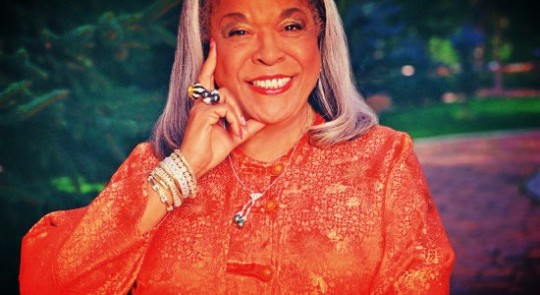
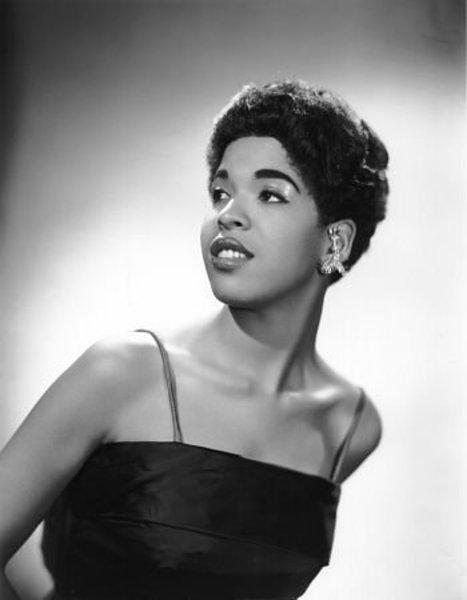
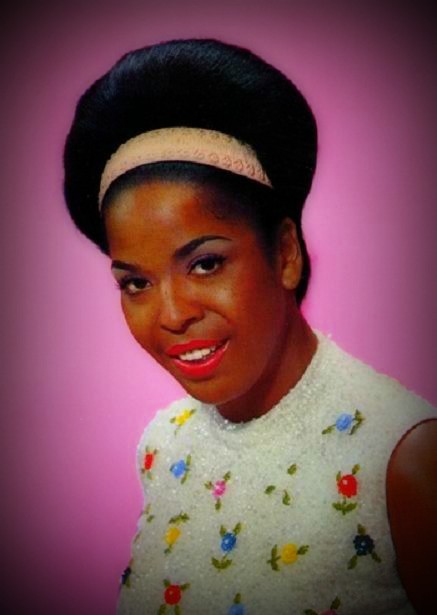
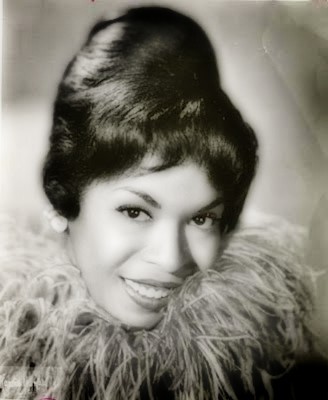
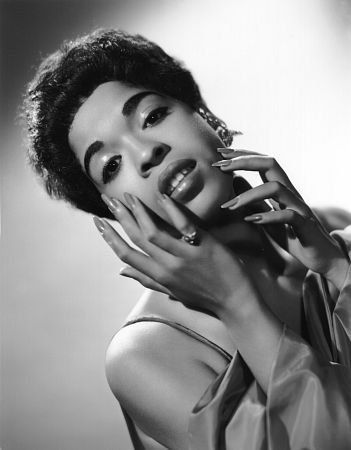
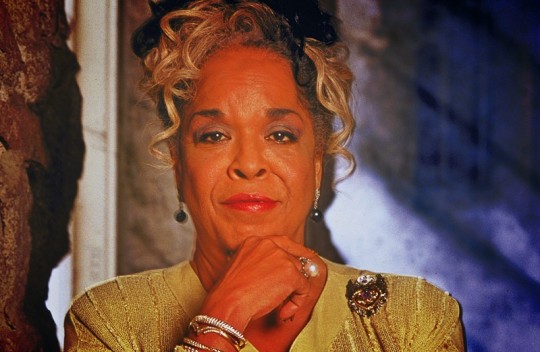
Della Reese (born Delloreese Patricia Early; July 6, 1931) is an American nightclub, jazz, gospel and pop singer, film and television actress, one-time talk-show hostess and ordained minister, whose career has spanned six decades. She has also appeared as a guest on several talk shows and as a panelist on numerous game shows.
Reese's long career began as a singer, scoring a hit with her 1959 single "Don't You Know?". In the late 1960s, she had hosted her own talk show, Della, which ran for 197 episodes. She also starred in films beginning in 1975, and included playing opposite Redd Foxx in Harlem Nights (1989), Martin Lawrence in A Thin Line Between Love and Hate (1996) and Elliott Gould in Expecting Mary (2010). She achieved continuing success in the television religious fantasy drama Touched by an Angel (1994–2003), in which Reese played the leading role of Tess.
Early years
Della Reese was born Delloreese Patricia Early on July 6, 1931, in the historic Black Bottom neighborhood of Detroit, Michigan, to Richard Thaddeus Early, an African American steelworker and Nellie (Mitchelle), a Native American cook of the Cherokee tribe. Her mother also had several children before Reese's birth, none of whom lived with her; hence, Reese grew up as an only child. At six years old, Reese began singing in church. From this experience, she became an avid gospel singer. On weekends in the 1940s, she and her mother would go to the movies independently to watch the likes of Joan Crawford, Bette Davis, and Lena Horne portray glamorous lives on screen. Afterwards, Reese would act out the scenes from the films. In 1944, she began her career directing the young people's choir, after she had nurtured acting plus her obvious musical talent. She was often chosen, on radio, as a regular singer. At the age of 13, she was hired to sing with Mahalia Jackson's gospel group. Delloreese entered Detroit's popular Cass Technical High School (where she attended the same year as Edna Rae Gillooly, later known as Ellen Burstyn). She also continued with her touring with Jackson. With higher grades, she was the first in her family to graduate from high school in 1947, at only 15.
Afterwards, she formed her own gospel group, the Meditation Singers. However, due in part to the death of her mother, and her father's serious illness, Reese had to interrupt her schooling at Wayne State University to help support her family. Faithful to the memory of her mother, Deloreese also moved out of her father's house when she disapproved of him taking up with a new girlfriend. She then took on odd jobs, such as truck driver, dental receptionist, and even elevator operator, after 1949. Performing in clubs, Early soon decided to shorten her name from "Delloreese Early" to "Della Reese."
Musical career
Reese was discovered by the gospel singer Mahalia Jackson, and her big break came when she won a contest, which gave her a week to sing at Detroit's well-known Flame Show Bar. Reese remained there for eight weeks. Although her roots were in gospel music, she now was being exposed to and influenced by such famous jazz artists as Ella Fitzgerald, Sarah Vaughan and Billie Holiday. In 1953, she signed a recording contract with Jubilee Records, for which she recorded six albums. Later that year, she also joined the Hawkins Orchestra. Her first recordings for Jubilee were songs such as "In the Still of the Night" (originally published in 1937), "I've Got My Love to Keep Me Warm" and "Time After Time" (1947). The songs were later included on the album And That Reminds Me (1959).
In 1957, Reese released a single called "And That Reminds Me." After years of performing, she gained chart success with this song. It became a Top Twenty Pop hit and a million-seller record. That year, Reese was voted by Billboard, Cashbox and various other magazines, as "The Most Promising Singer." In 1959, Reese moved to RCA Records and released her first RCA single, called "Don't You Know?," which was adapted from Puccini's music for La Bohème, specifically, the aria Musetta's Waltz. It became her biggest hit to date, reaching the #2 spot on the Pop charts and topping the R&B charts (then called the "Hot R&B Sides") that year. It sold over one million copies, and was awarded a gold disc by the RIAA. Eventually, the song came to be widely considered the signature song of her early career. Reese received a Grammy nomination for her 1960 album, Della and then released a successful follow-up single called "Not One Minute More" (#16). She remained on the Billboard Hot 100 chart with the songs "And Now" (#69), "Someday (You'll Want Me to Want You)" (#56) and "The Most Beautiful Words" (#67).
In November 1960, Reese appeared in advertisements in Ebony magazine for the newly launched AMI Continental jukebox. Reese recorded regularly throughout the 1960s, releasing singles and several albums. Two of the most significant were The Classic Della (1962) and Waltz with Me, Della (1963), which broadened her fan base internationally. She recorded several jazz-focused albums, including Della Reese Live (1966), On Strings of Blue (1967) and One of a Kind (1978). She also performed in Las Vegas (Nevada) for nine years and toured across the country. Reese continued to record albums in the following decades, receiving two more Grammy nominations in the gospel category for the album Della Reese and Brilliance (1991) and for the live recorded album, My Soul Feels Better Right Now (1999). Motown singer Martha Reeves cites Reese as a major influence and says she named her group The Vandellas after Van Dyke Street in Detroit and Della Reese.
Television and film career
In 1969, she began a transition into acting work which would eventually lead to her greatest fame. Her first attempt at television stardom was a talk show series, Della, which was cancelled after 197 episodes (June 9, 1969 – March 13, 1970).
In 1970, Reese became the first black woman to guest host The Tonight Show Starring Johnny Carson. She appeared in several TV movies and miniseries, was a regular on Chico and the Man and played the mother of B. A. Baracus in The A-Team episode "Lease with an Option to Die." In 1991, she starred opposite old friend, Redd Foxx, in his final sitcom, The Royal Family, but his death halted production of the series for several months. Reese also did voice-over for the late-1980s animated series A Pup Named Scooby-Doo. In 1989, she starred alongside Eddie Murphy, Richard Pryor and Redd Foxx in the theatrical release movie Harlem Nights, in which she performed a fight scene with Eddie Murphy. Reese appeared as a panelist on several episodes of the popular television game show Match Game.
Television (and podcast) guest appearances
Reese has had a wide variety of guest-starring roles, beginning with an episode of The Mod Squad. This led to other roles in such series as: The Bold Ones: The New Doctors, Getting Together, Police Woman, Petrocelli, Joe Forrester, Police Story, The Rookies,McCloud, Sanford and Son with old friend Redd Foxx, Vega$, Insight and two episodes of The Love Boat. She also had a recurring role on It Takes Two opposite Richard Crenna and Patty Duke, three episodes of Crazy Like a Fox, four episodes of Charlie & Co. opposite Flip Wilson, 227 with best friend Marla Gibbs, MacGyver, Night Court, Dream On, Designing Women, Picket Fences, That's So Raven and The Young and the Restless. She has also been featured (by proxy) on the McElroy family Dungeons and Dragons podcast, The Adventure Zone, after a magical, kickass deity was named after her.
Touched by an Angel
After coping with the death of one of her best friends, Redd Foxx, in 1991, she was reluctant to play an older female lead in the inspirational television drama Touched by an Angel, but went ahead and auditioned for the role of "Tess." She wanted to have a one-shot agreement between CBS and producer Martha Williamson, but ordered more episodes. Reese was widely seen as a key component of the show's success. Already starring on Touched by an Angel was the lesser-known Irish actress Roma Downey, who played the role of case worker Tess's angel/employee, Monica. In numerous interviews, there was an on- and off-screen chemistry between both Reese and Downey.
The character of Tess was the angelic supervisor who sent the other angels out on missions to help people redeem their lives and show them God's love, while at the same time, she was sassy and had a no-nonsense attitude. The show often featured a climactic monologue delivered by the angel Monica in which she reveals herself as an angel to a human with the words: "I am an angel sent by God to tell you that He loves you." The character of Tess was portrayed by Reese as down-to-earth, experienced and direct. Reese also sang the show's theme song, "Walk With You," and was featured prominently on the soundtrack album produced in conjunction with the show.
During its first season in 1994, many critics were skeptical about the show, it being the second overtly religious prime-time fantasy series, after Highway to Heaven. The show had a rocky start, low ratings and was cancelled 11 episodes into the first season. However, with the help of a massive letter-writing campaign, the show was resuscitated the following season and became a huge ratings winner for the next seven seasons. At the beginning of the fourth season in 1997, Reese threatened to leave the show because she was making less than her co-stars; CBS ended up raising her salary. Touched by an Angel was cancelled in 2003, but it continued re-running heavily in syndication and on The Hallmark Channel. Roma Downey said of her on- and off-screen relationship with Reese:
"She's very wise. She's very loving. She can be a little gruff at times, but she's always adoring and adorable. I lost my mother when I was very young, and during my whole adolescence and into my twenties, I'd been looking for a mother figure, and I really think I can say with absolute truth and sincerity that I feel that I finally found her in Della Reese."
Downey later also said:
"I think I'll just always remember the feel of her neck against my cheek when she hugs me and the love I know that she has for me and the love that I feel for her and the love that she has for God. To know Della is to know that she loves God."
Personal life
Reese's mother, Nellie Mitchelle Early, died in 1949 of a cerebral hemorrhage. Reese's father, Richard Early, died ten years later. Reese had an adoptive daughter whom she acquired from a family member unable to care for her, named Deloreese Daniels Owens, in 1961. Owens died on March 14, 2002. It was never released whether she died from suicide or from implications stemming from pituitary disease. Reese said about the painful experience, sharing her frustration with the lack of awareness and knowledge of pituitary disorders,
"When it happened, I thought, 'It's such an odd thing to die from,' because pituitary problems aren't something you hear about. It makes it harder because you don't understand what happened. It seemed so strange and hard to explain. It still is, to be honest."
In 1952 Reese married factory worker Vermont Adolphus Bon Taliaferro, nineteen years her senior, and adopted the stage name Pat Ferro for a week, before introducing her current name - though sources differ as to whether this was after the failure of the marriage, or simply a show-business decision.
A second marriage ceremony, on 28 December 1959, to accountant Leroy Basil Gray, who had two children by a previous marriage, was kept secret for some time. This marriage either ended in divorce or was annulled on the basis that Gray's previous divorce was invalid.
Reese appears to have been briefly married to Mercer Ellington (who was then her manager) in 1961, before this was annulled due to Ellington's Mexican divorce being ruled invalid.
In 1979, after taping a guest spot for The Tonight Show, she suffered a near-fatal brain aneurysm, but made a full recovery after two surgeries by neurosurgeon Dr. Charles Drake at University Hospital in London, Ontario. In 1983, she married Franklin Thomas Lett, Jr., a concert producer and writer. In 2002, Reese announced on Larry King Live that she had been diagnosed with type-2 diabetes, but didn't come as a surprise considering what she ate and what her diet consisted of, as well as her weight. She loved cake, especially chocolate. She became a spokeswoman for the American Diabetes Association, traveling around the United States to raise awareness about this disorder. In 2005, Reese was honored by Oprah Winfrey at her Legends Ball ceremony, along with 25 other black women.
Reese was ordained as a minister through the Christian New Thought branch known as Unity, after serving as the senior minister and founder of her own church, Understanding Principles for Better Living. The "Up Church" is under Universal Foundation For Better Living, a denomination of Christian New Thought founded by Rev. Johnnie Colemon, a close friend of Rev. Reese-Lett. In 2014, the IRS Criminal Division began investigating the disappearance of nearly $2 million from church banking investments, as well as very questionable/misappropriation of church funds and not paying church employees their earned wages. They currently meet at First Lutheran Church (www.firsting.org) in Inglewood, California. In her ministerial work, she is known as the Rev. Dr. Della Reese Lett.
On July 6, 2011, Reese celebrated her 80th Birthday at the Catalina Jazz Club in Los Angeles, California. In 2015, a Golden Palm Star on the Palm Springs, California, Walk of Stars was dedicated to her.
On August 29, 2016, nearly two months after she celebrated her 85th birthday, Reese was said to be in failing health, as she uses a wheelchair, following two serious brain surgeries. She also admitted about her suffering from diabetes, "My life is at stake," she said. "I don’t have type 2 diabetes — type 2 diabetes has me." Reese is not wheelchair bound, and tries to avoid using one often because it could make her condition worse. Prior to attending the ceremony to honor her former co-star and long-term friend, Roma Downey, who herself, received a Star on the Hollywood Walk of Fame, years after her mentor, she also admitted (after collapsing on the set of Touched by an Angel) in 2014, contributed to her diabetes, after years of eating her old, nightly snacks of fried chicken, potato chips, ice cream, candy bars and cola, who was very frustrated because she didn't do anything to prevent her health, when she did the best she could to control her disease, "With diet, exercise and medication, I took control of my diabetes," she stated. "I lost 20 pounds and lowered my blood sugar from between 275 and 300 to between 67 and 110." After her last appearance on Signed, Sealed, Delivered, she had retired from acting.
FilmographyFilmTelevision
Awards and nominations
Awards
1994: Hollywood Walk of Fame: 7060 Hollywood Boulevard – Television
1996: Image Award for Outstanding Lead Actress in a Drama Series – Touched by an Angel
1997: Image Award for Outstanding Lead Actress in a Drama Series – Touched by an Angel
1998: Image Award for Outstanding Lead Actress in a Drama Series – Touched by an Angel
1999: Image Award for Outstanding Lead Actress in a Drama Series – Touched by an Angel
2000: Image Award for Outstanding Lead Actress in a Drama Series – Touched by an Angel
2001: Image Award for Outstanding Lead Actress in a Drama Series – Touched by an Angel
2002: Image Award for Outstanding Lead Actress in a Drama Series – Touched by an Angel
Nominations
1960: Grammy Award – Don't You Know
1961: Grammy Award – Della (Album)
1991: Grammy Award – Della Reese and Brilliance
1997: Emmy Award for Outstanding Supporting Actress in a Drama Series – Touched by an Angel
1997: Screen Actors Guild Award for Outstanding Performance by a Female Actor in a Drama Series – Touched by an Angel
1998: Emmy Award for Outstanding Supporting Actress in a Drama Series – Touched by an Angel
1998: Golden Globe Award for Best Performance by an Actress in a Supporting Role in a Made for TV Series – Touched by an Angel
1998: Screen Actors Guild Award for Outstanding Performance by a Female Actor in a Drama Series – Touched by an Angel
1999: Grammy Award – My Soul Feels Better Right Now
2000: Annie Award for Outstanding Individual Achievement for Voice Acting By a Female Performer in an Animated Feature – Dinosaur
Wikipedia
8 notes
·
View notes